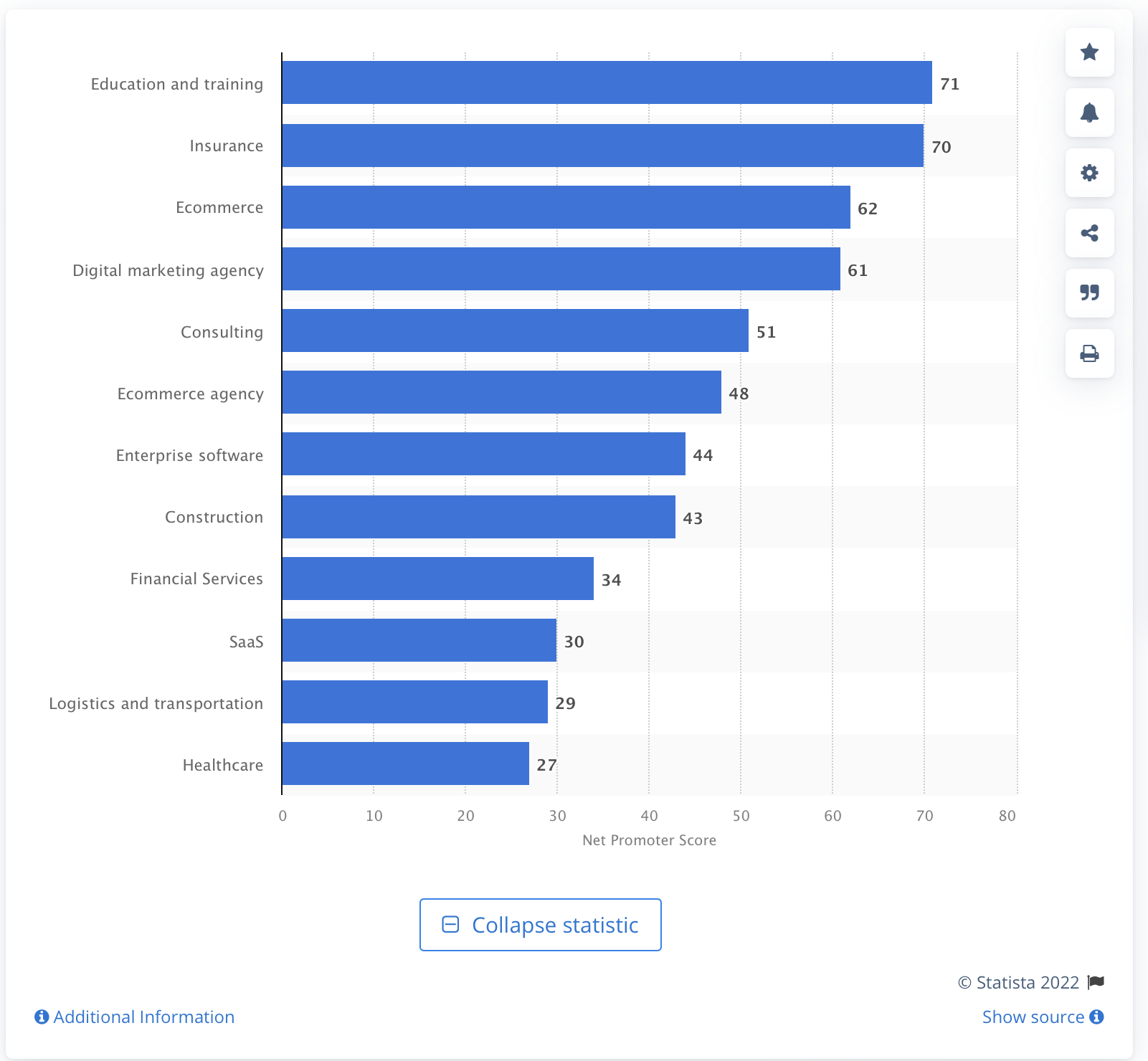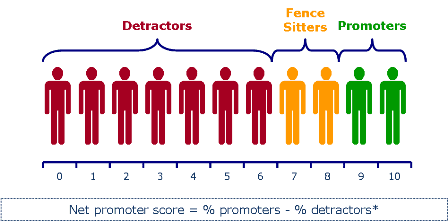In a competitive market, customer satisfaction and recommendations are crucial to a brand’s success. While reviews and word-of-mouth recommendations are fantastic, most brands use some form of quantitative measurement of customer experience. The benefits of numerical data are simplicity and uniformity across businesses and industries.
There are a number of ways that these performance measures can be calculated. One of the most simple and widely used is the net promoter score.
What Is Net Promoter Score?
Net promoter score (NPS) is a numerical metric used to measure the level of customer satisfaction and enthusiasm for your brand. Developed by Bain and Company in 2003, it is used by businesses to measure customer loyalty.
NPS measures customer satisfaction and brand loyalty by asking just one question:
On a scale of 1-10, how likely are you to recommend this product/service to a friend or colleague?
Individual scores from customers collated together are known as the aggregate net promoter score.
How to Calculate NPS
NPS is simple to calculate. You’ll need to collect all of your scores in one place to make the calculation as easy as possible, using this formula:
NPS = % promoters – % detractors
A detractor is any respondent who answers with a six or lower. They’re unsatisfied with some aspects of your product/service or company. They may even discourage others from engaging with your business, depending on the nature of their issue.

A promoter is any respondent who answers with a nine or ten. They’re very happy with your service and are most likely to actively promote it.
A third category exists, known as passives, although they aren’t included in an NPS calculation. These customers are likely happy with your service but aren’t enthusiastic about recommending it to others.
Why Is NPS Important?
The major benefit of an NPS is gaining a uniform and simple measurement of customer satisfaction and loyalty towards a brand. This benefits your brand or business in all of these ways:
- Goal-setting: numerical metrics can measure the success of customer retention campaigns and make it easier to identify a goal.
- Team cohesion: a single goal can unite your team in their ethos and working processes.
- Following up: a single-question survey gives brands the opportunity to expand the data they have on customer satisfaction.
Once you’ve collected this data, there are several ways in which this can benefit your brand in the long run, including:
- Improved customer experience: a low NPS can indicate a poor customer experience, which you can then take steps to improve with this feedback.
- Quickly identifying problems: the longer problems continue, the more chance customers will have to spread this information to friends or colleagues, so picking them up as soon as possible is beneficial for your brand reputation.
The two most common ways of collecting this data are sending an email survey or using a pop-up on your website. In some industries, for example, wholesale ecommerce, you may benefit from going directly to buying by email or by verbal communication. On the other hand, online retail customers may respond more positively to website pop-ups.
4 Tips to Leverage NPS for Business Growth
NPS can be a great tool to help grow your business if used correctly. Once you’ve calculated it, you can then put it to use to attract more customers and increase your retention rate. Be sure to keep an eye on your conversation analytics while you’re working on growing your business to ensure that your customers are still getting the best service possible.

1. Follow Up With Detractors
If customers rate your brand with a low score, they’re likely to have a reason. You can quickly find ways to improve your customers’ experiences by using email or messaging to follow up with low-rating customers.
Understanding exactly what isn’t working for your customers can help you to easily improve customer-facing services and avoid further negative feedback.
It’s important to speak with detractors about their experience as they may seek to discourage others from using your product/service.
2. Gain Additional Feedback
NPS can serve as a lead into follow-up feedback.
Both major ways of collecting NPS data are great opportunities for asking follow-up questions. A single piece of data can only show you so much, so you should be taking this opportunity to find out where your customers are struggling to connect with your brands.
For example, you may offer an excellent service but have poor post-service communication. Consider healthcare, for instance. This is an industry that often requires reassurance and privacy in all communications. So, a healthcare brand might benefit from an HIPAA compliant VoIP (voice over internet protocol) phone system.
This can help you to address specific customer-facing issues that may help to bring in more customers and improve the future experiences of detractors.
3. Reconnect With Dark Leads
Dark leads are formerly promising sales leads, usually from promoters who don’t go through with their purchase. They fail to convert into customers.
An NPS is one way of identifying dark leads and separating them from detractors who may not respond well to follow-ups.
One of the ways that you can do this is to change up your communication style, particularly if you’ve found that your primary method (for example, email) isn’t working for your customers.

You might consider using a live chat outsourcing service to reconnect with dark leads so that every communication is in the same place. This makes for easy transferral of information and data collection.
4. Improve Your Value Proposition
Your value proposition is the term used for the promised value that your brand will deliver to your customers. It can also refer to the expectation of value that your customer has when they engage with your business.
A high-value proposition can mean the difference between closing and losing a sale. By using NPS data, you can identify the value points that your customers need the most and work on improving and prioritizing these.
Next Steps
Integrating NPS into your customer relationship management (CRM) strategy can be straightforward and bring a high return on investment (ROI).
To maximize ROI and keep things simple for your team, make sure that you’re clear about your goals and your audience. Keep track of which customer personas you’re targeting with your products and what might affect their customer experience.
Finally, bear in mind that improvements take time. Don’t be disheartened if your strategy doesn’t produce immediate results.



